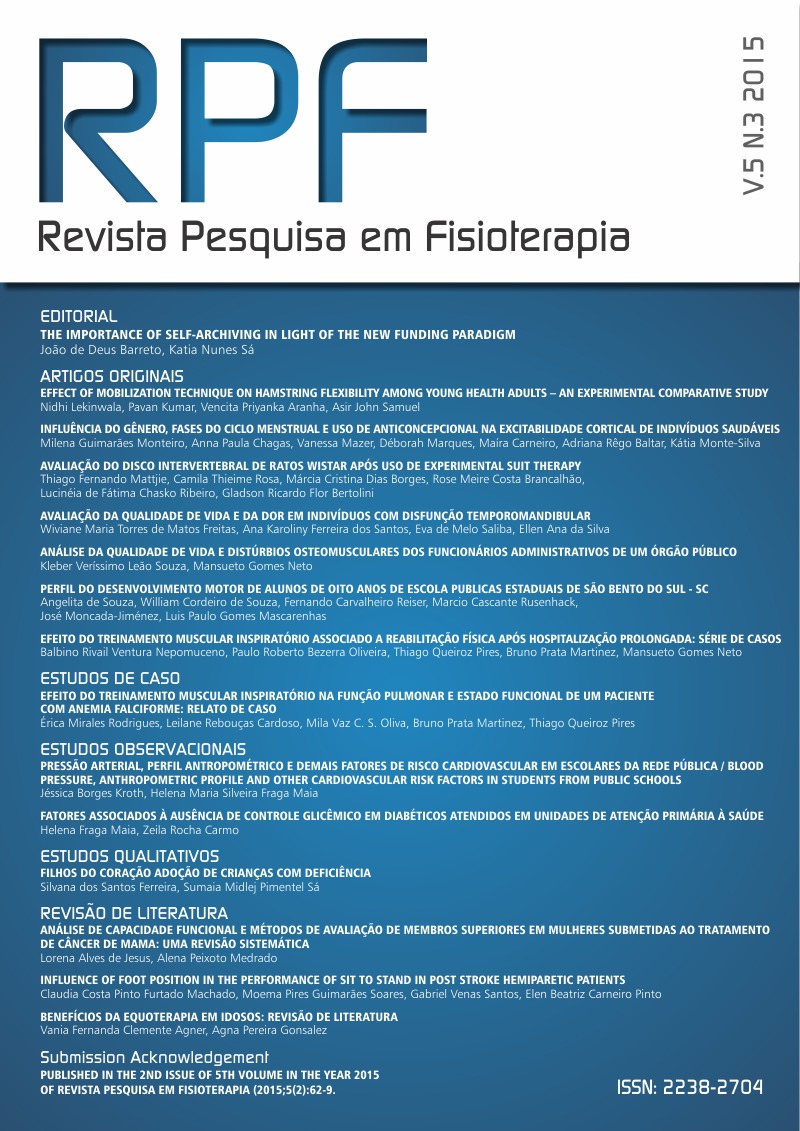EFFECT OF MOBILIZATION TECHNIQUE ON HAMSTRING FLEXIBILITY AMONG YOUNG HEALTH ADULTS – AN EXPERIMENTAL COMPARATIVE STUDY
DOI:
https://doi.org/10.17267/2238-2704rpf.v5i3.742Keywords:
Adults, Block randomization, Flexibility, Hamstring, Straight leg raise, Soft tissue mobilizationAbstract
Aim: To compare the effect of Mulligan’s traction straight leg raise (TSLR) and dynamic soft tissue mobilization technique (DSTM) on hamstring flexibility among the healthy young adults. Methods: Forty healthy young adults aged between 18 and 30 years were recruited by purposive sampling technique for the experimental study. They were allocated into two groups by block randomisation. Subjects in the group 1 received TSLR technique and group 2 was provided with DSTM. Passive SLR and Active Knee Extension was measured in pre and post intervention using standard 360o goniometer. Measurements are taken on 1st day (before and after intervention) and end of 3rd session. Each session was carried out every alternate day. Mean difference in both groups at the end of 3rd session were noted for analysis. Data analysis: Descriptive statistics were reported as mean (Standard deviation) and range. Friedman test and Kruskal-Wallis test were used to report significance difference within and between groups. For all the analysis, the significance level was set at P < 0.05. Result: Mean difference in Group 1 (TSLR), Passive SLR ROM is 28.25° and AKE ROM is 30.5° while in Group 2 (DYSM), Passive SLR is 20.45° and AKE ROM is 25.05° which are significant at difference at p<0.001 Conclusion: TSLR group is more effective than DYSM group in increasing hamstring flexibility among healthy young adults.



